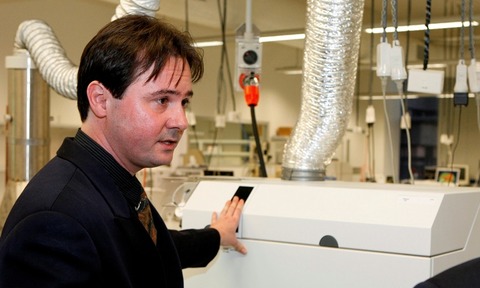
Scientists are reconfiguring Agilent’s MS technology to improve understanding of how trace metals affect humans.
Elemental imaging technology developed at the University of Technology Sydney (UTS) could change understanding of the role of metals and trace elements in the human body.
The imaging technology and resulting research program are the products of an ongoing relationship between UTS Professor Philip Doble and Agilent Technologies.
The UTS/Agilent partnership recently spawned two Australian Research Council (ARC) Linkage applications, which attracted nearly $800,000 in the latest round of 2012 funding.
The two organisations have now signed a new contract to extend the collaboration for another three years.
The first Linkage project aims to build an elemental atlas of a mouse brain to gain insights into the role that metals play in degenerative neurological disorders like Parkinson’s and Alzheimer’s disease.
“What we can do is image the metal distribution [in a mouse brain model that is similar to people with Parkinson’s disease], and see what happens to, say, iron, copper, zinc, manganese and other elements,” said Doble.
The second project looks trace of elements in the body using inductively-coupled mass spectrometry.
Professor Doble and his team are investigating whether changes to normal trace elements levels could signal the presence of diseases, including a range of cancers.
The instruments behind inductively-coupled mass spectrometry technology were originally created for geological research.
However, Professor Doble saw the potential for health care applications and, working with Agilent, reconfigured the equipment to create a truly novel technology with the potential to reshape the biomedical research field.
“Developing the technology is probably the most exciting aspect of the relationship with Agilent so far,” he said.
“Already, it has led to collaborations with Seoul National University Hospital in Korea, Monash University and the Mental Health Research Institute in Melbourne.”




